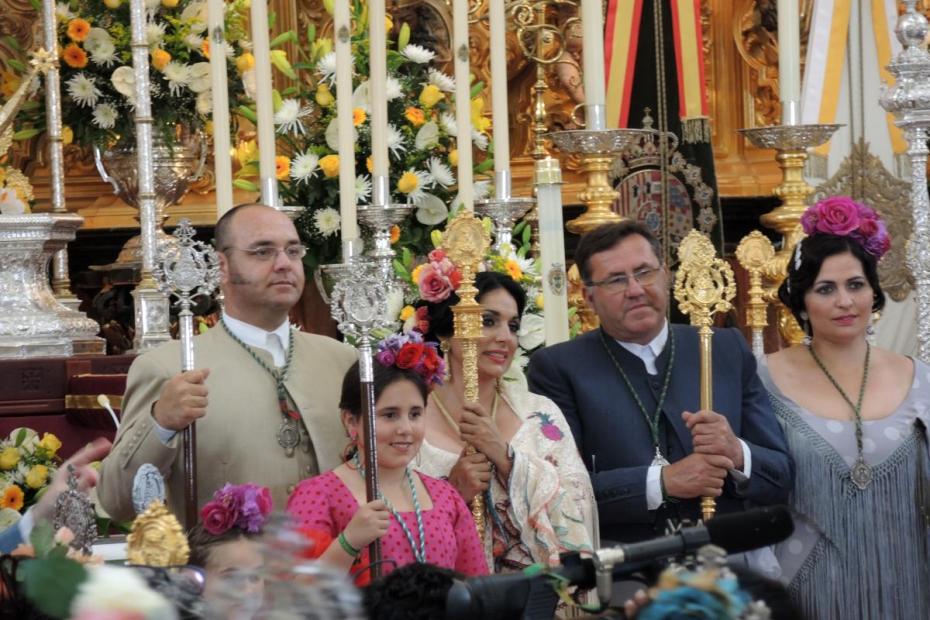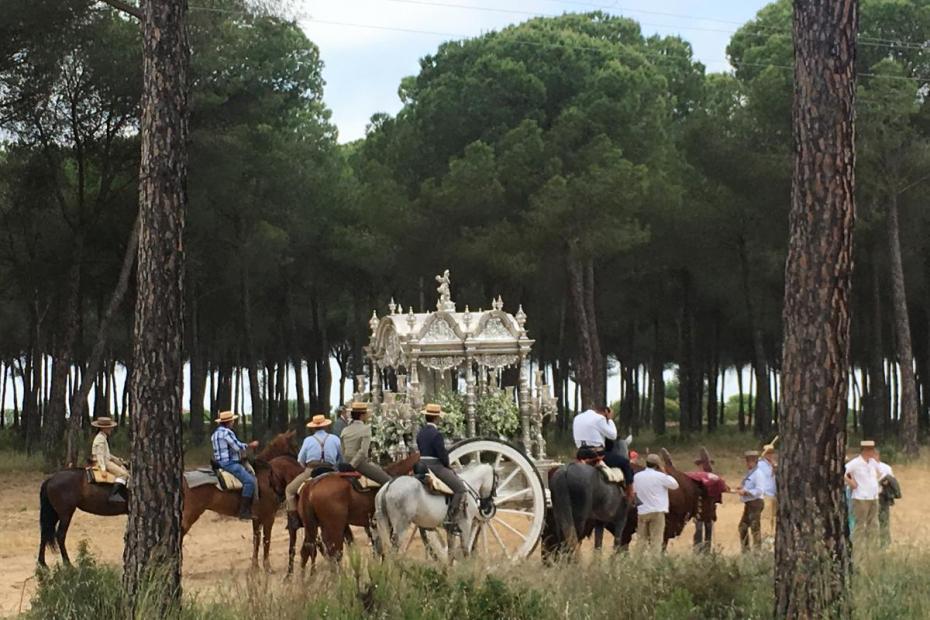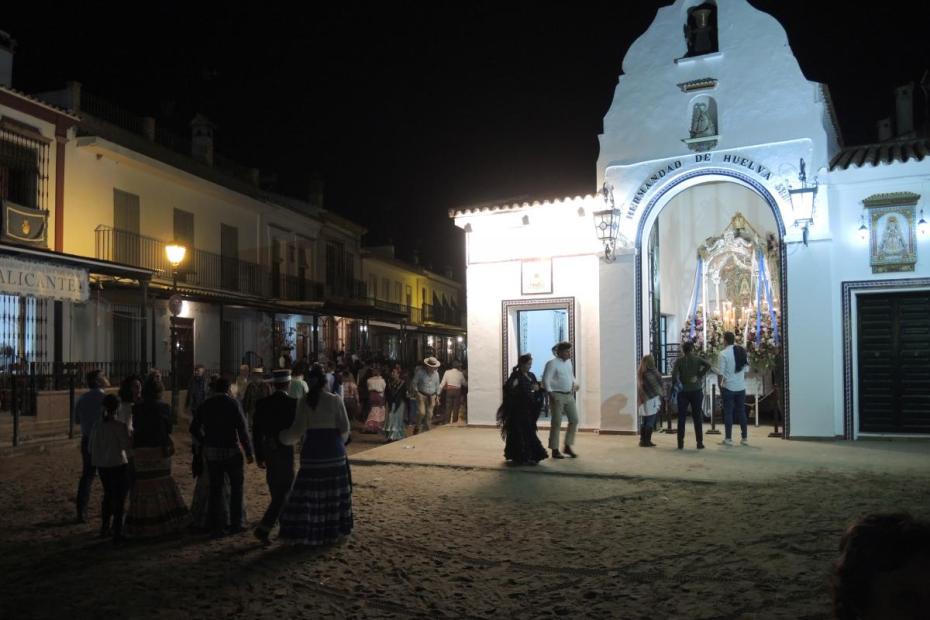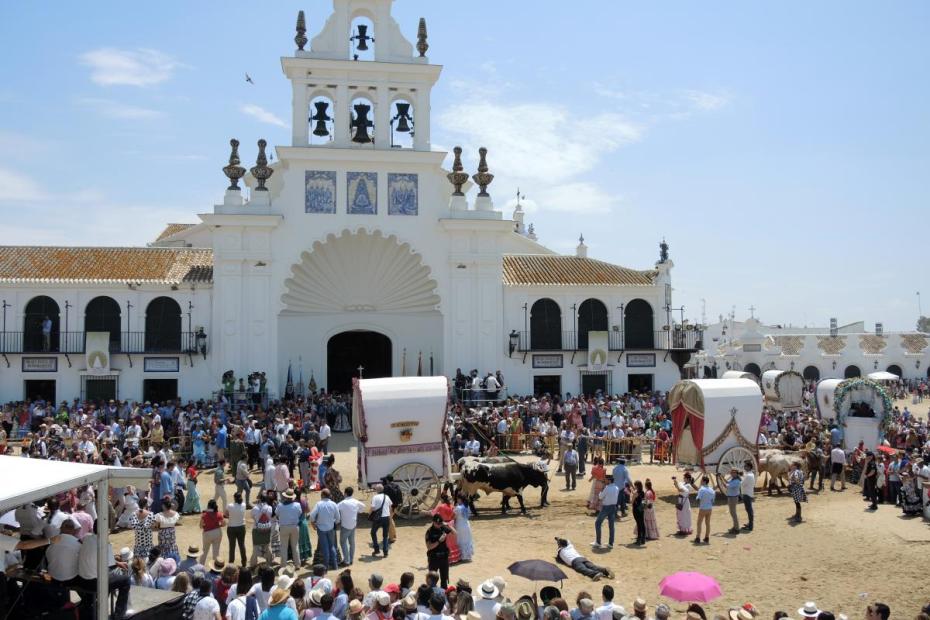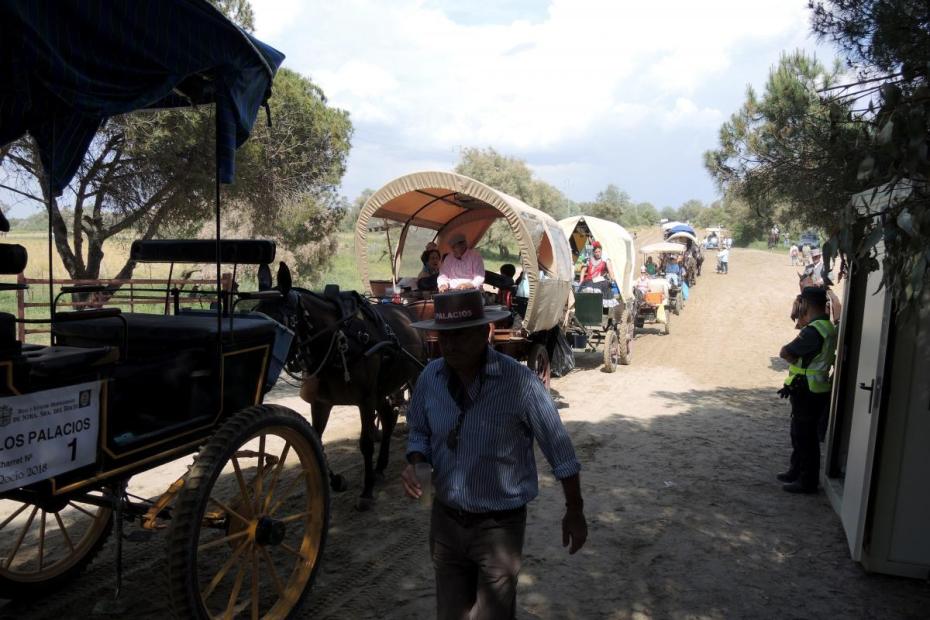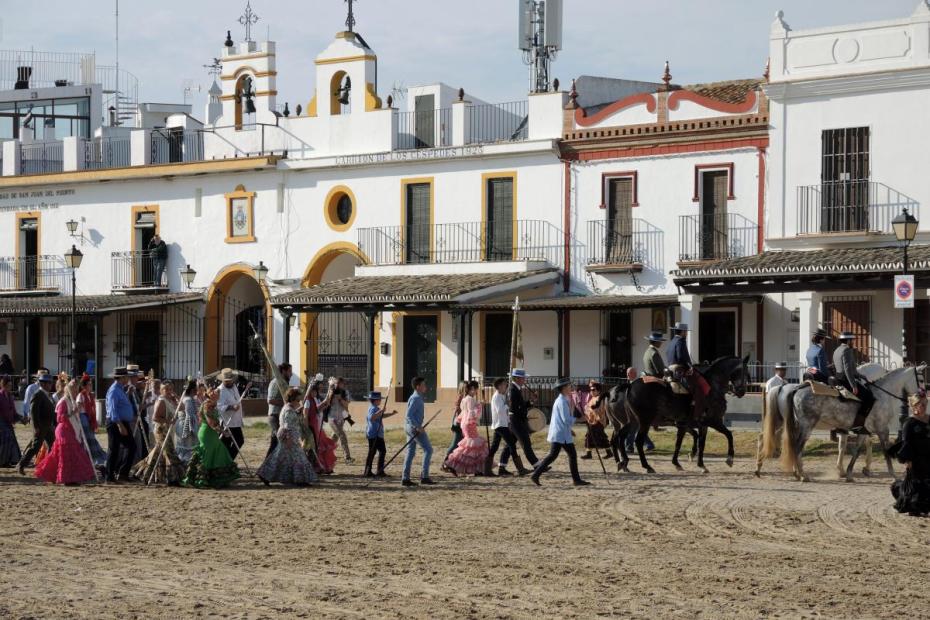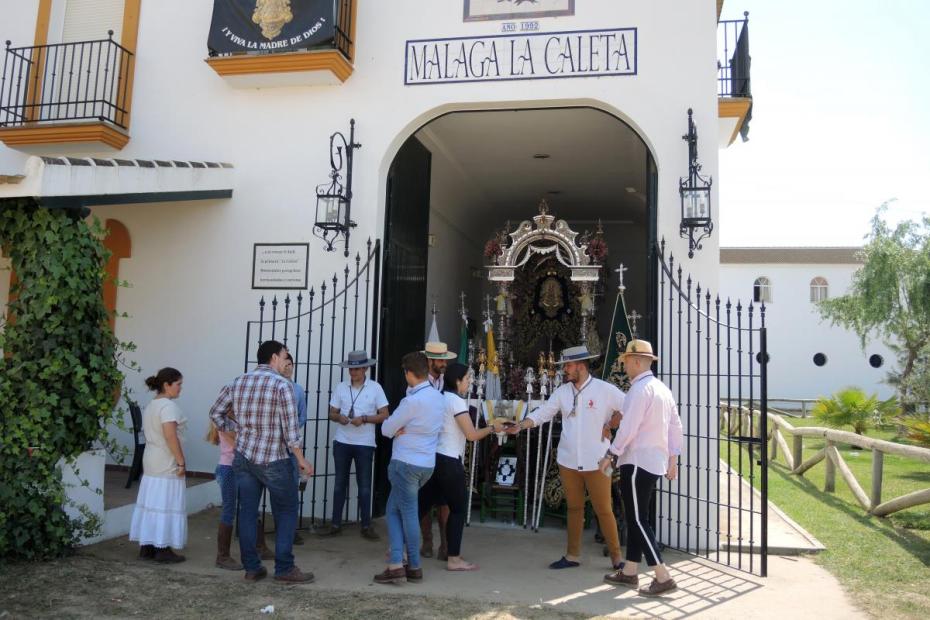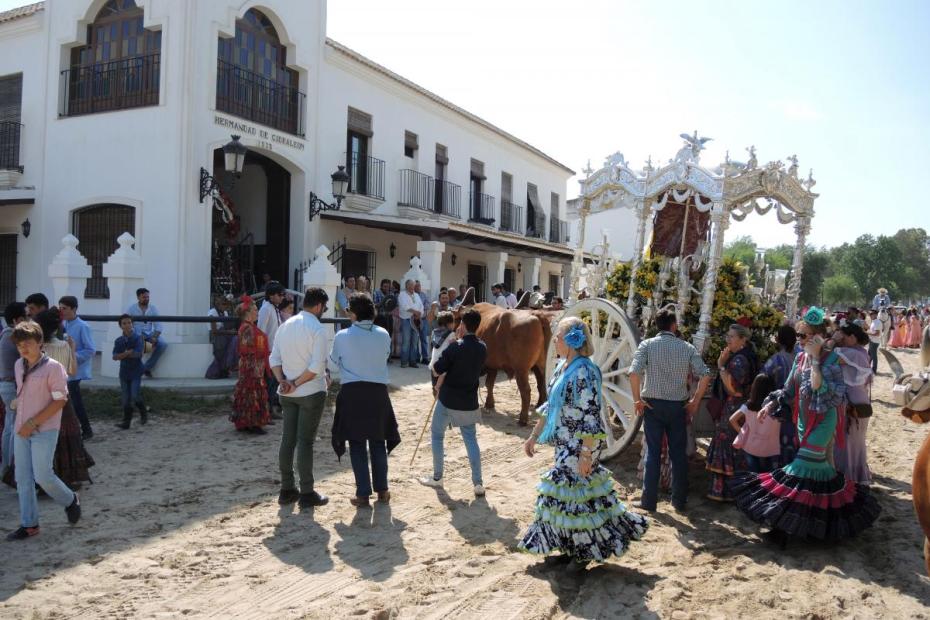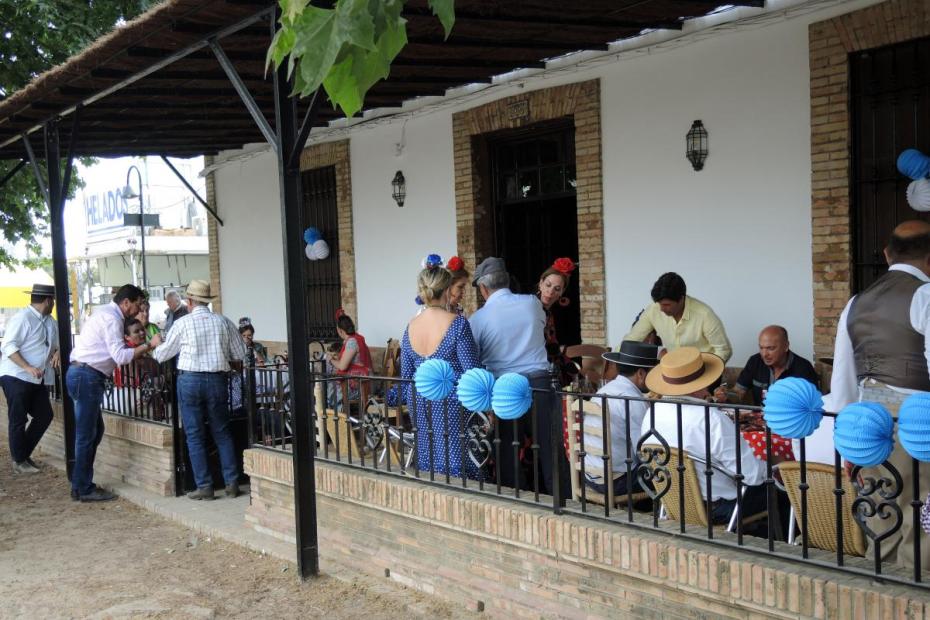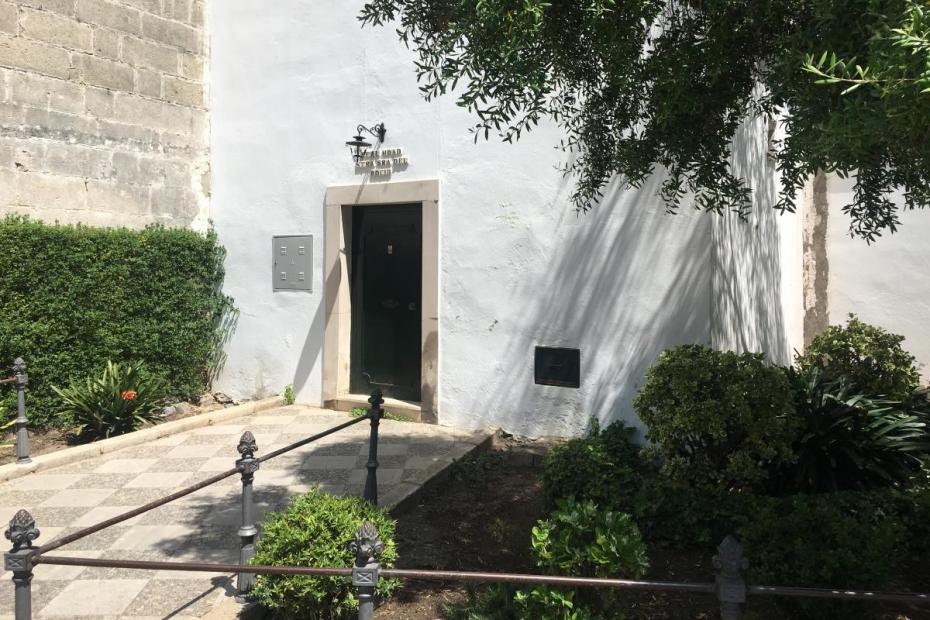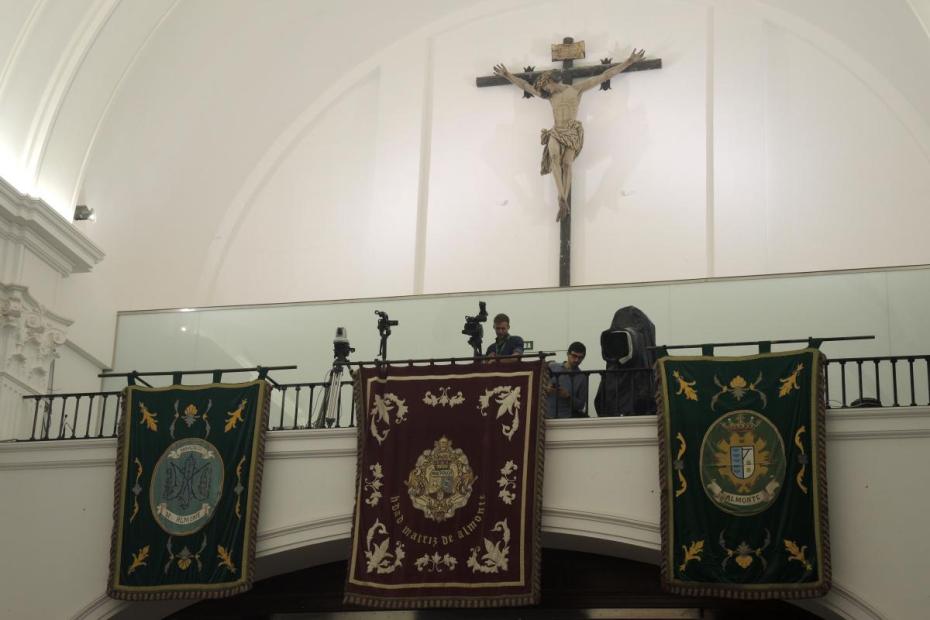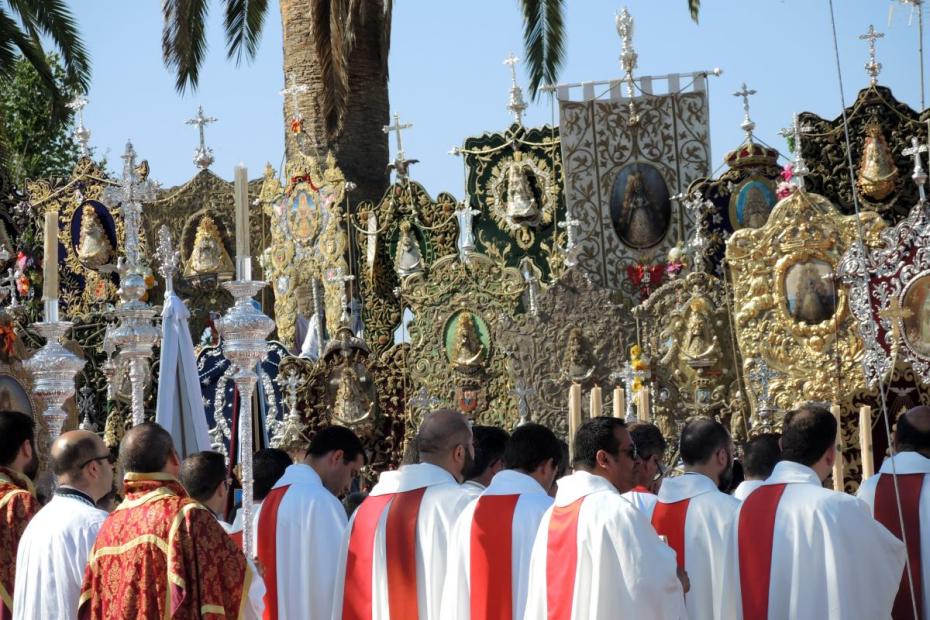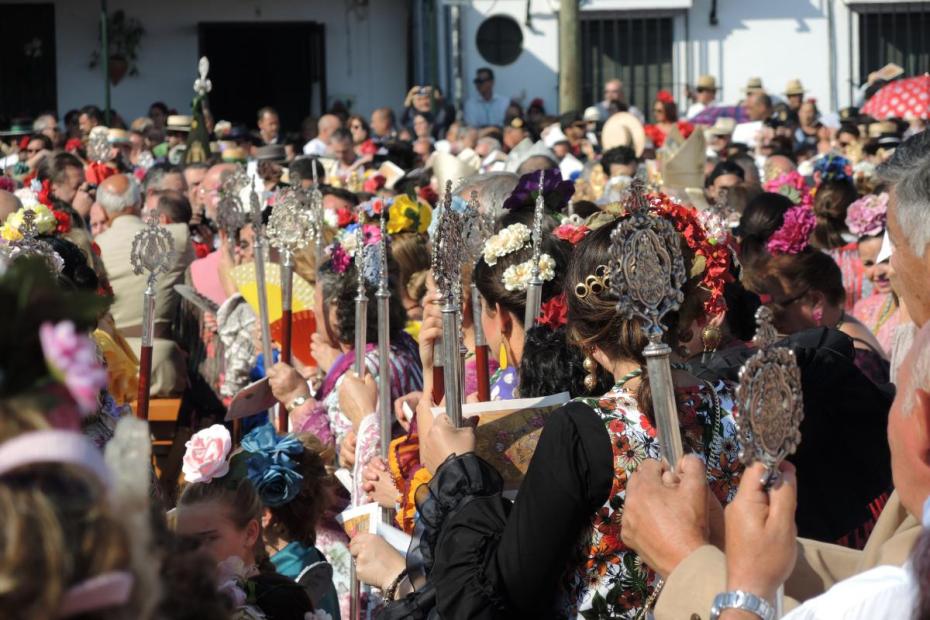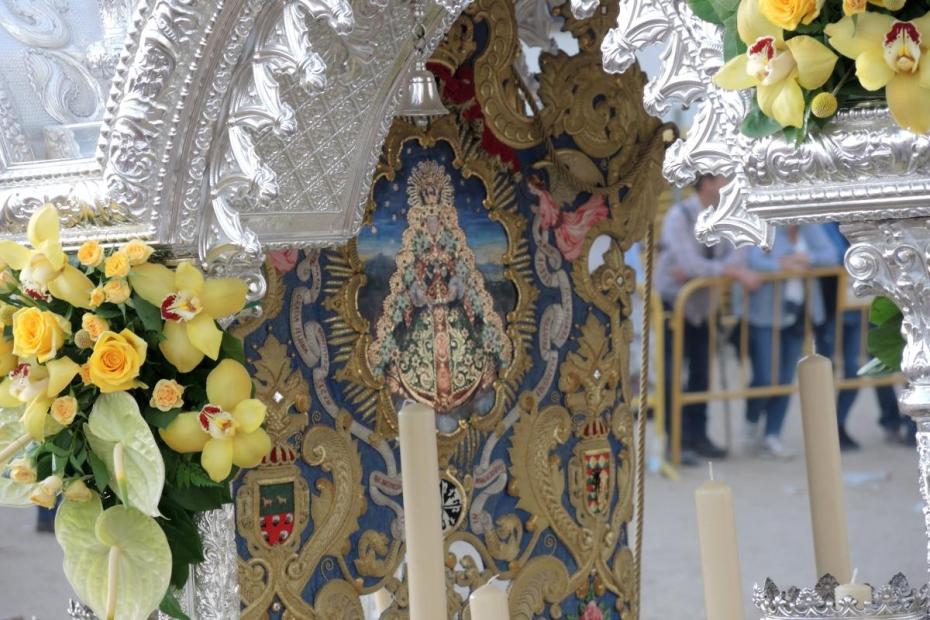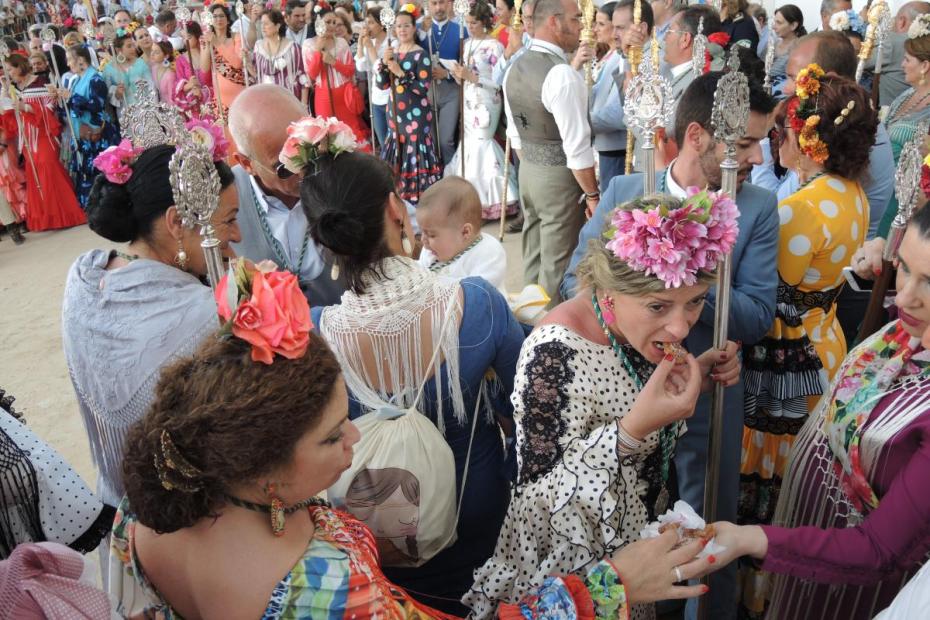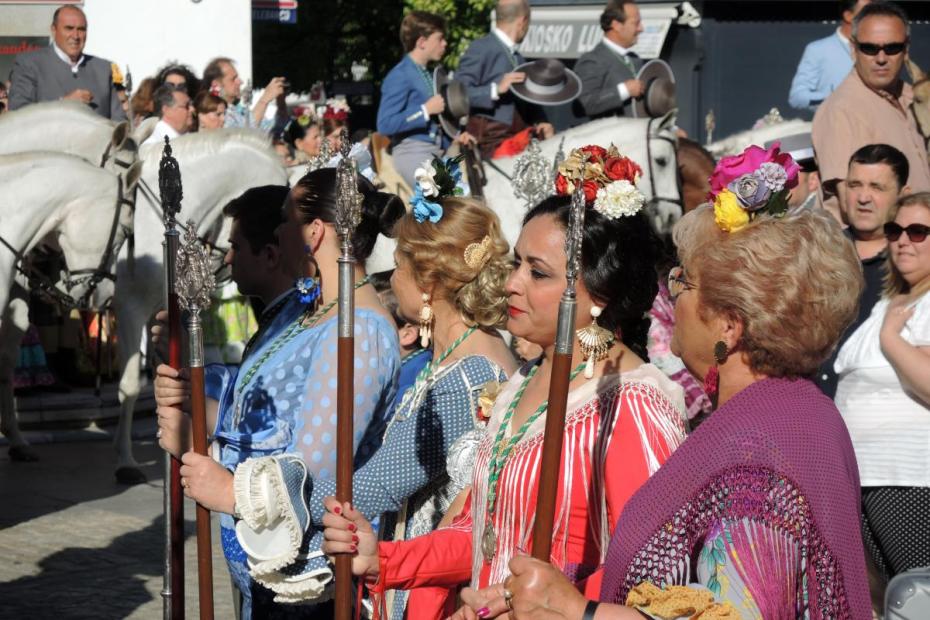Though a great many people make day trips by car, at heart the feast at El Rocío is organized around the pilgrimages of 124 hermandades, or brotherhoods. These are the groups that make the picturesque journey into town in ox- or horse-drawn wagons, and stay in special group houses for the duration. The first and oldest of them, Almonte’s Hermandad Matriz, is the custodian of the sanctuary that the town and feast is built around and the key organizing force for the feast. Its members have the exclusive right to carry the image of the Nuestra Señora del Rocío in the celebrated night procession.1
Many villages and cities in Andalucia, the southernmost region of Spain, have a brotherhood dedicated to El Rocío, and a growing number of cities outside the region do as well, mostly comprised of Andalucians who have migrated there. Almost all of these own a dormitory house in El Rocío where they can host their pilgrim members. Many also have a small edifice in their home town for meetings. The brotherhoods exist primarily to foster devotion to Our Lady of Rocío and to develop the religious lives of the members, though all support some charity as well.
Though all the members can seldom be accommodated in the main houses of their hermandades—many of the oldest brotherhoods, in particular, have outgrown their prime real estate locations, and have to rent other houses for their members—the houses are the place where much of El Rocío’s socializing and conviviality takes place. The pilgrimage wagon trails into the city are reserved entirely for approved hermandades, which arrive in town in designated order. Though people can visit the church individually, the official presentations of the full pilgrim membership of each hermandad is an important and highly choreographed ritual event of the pilgrimage. On the famous, rowdy nighttime procession, the point is for the image of El Rocío to be carried to the door each brotherhood’s official house. Much of the jostling and raucousness in the square is not simply to get close to the statue, but in a competitive way, to get the palio, the platform carrying the image, to steer toward a particular brotherhood house.
The Hermandad Matriz
The pilgrimage and the town of El Rocío itself are overseen by the Hermandad Matriz, the “mother” or founding brotherhood, of Almonte. The land where El Rocío is built is part of the town of Almonte (pop. 23,000), whose center is 17 kilometers to the north. The Hermandad Matriz has responsibility for organizing the feast and caring for the hermitage (sanctuary).2 They built and direct the sanctuary itself, and their brotherhood house is part of the sanctuary complex, though most members need to be housed elsewhere in the town. The banner of the Hermandad Matriz hangs most prominently at the rear of the sanctuary of El Rocío, flanked by the banners of the parish and city of Almonte, the other organizing bodies. Every seven years, the statue of Our Lady of Rocío is brought back to the town of Almonte to stay in the parish Church of the Assumption there.
The official name of the Hermandad Matriz, which was founded some time before 1653, is the Pontifical, Royal, and Illustrious Founding Brotherhood of Our Lady of Rocío of Almonte. Some other brotherhoods are pontifical and/or royal as well, or carry names like the Illustrious, Very Ancient and Devout Brotherhood of Our Lady of El Rocío of Pilas—titles that signal the sense of seriousness and honor imbued in membership. Members may enjoy their time together immensely, but their work is at the same time organized and formalized.
The Hermandad Matriz, like other hermandades, is governed by an elected president and governing board. Men and women share these roles. In 2018, the year recorded here, a woman served as the Hermano Mayor—elder “brother”—of the Hermandad Matriz and the entire pilgrimage. Membership is open to baptised, established residents of Almonte—men, women and children—and to persons who live elsewhere if they are children or grandchildren of Almonteños. The process of admission is formalized and requires recommendation by current members.
A good deal of the ritual during the pilgrimage is designed to recognize the primacy of the Hermandad Matriz. Its leaders welcome all other hermandades to the feast one after the other, spending a grueling day on their feet greeting each one. The attitude is always one of hearty welcome, but also of hierarchy. The Hermandad Matriz takes pride in drawing others into devotion to Rocío, and zealously guards their privilege as well. The raucous scenes in the sanctuary as it prepares to carry the palio out from the sanctuary, and even the frenzy in the streets to carry the image, are manifestations of that fiercely guarded status.
The Hermandad Matriz is also responsible for organizing celebrations at El Rocío for Candelaria in January, and for the smaller fiesta, the Rocío chico each August. Every seventh year, most recently during the feast's centennial in August 2019, she is brought back to Almonte, wearing the wide-brimmed hat of a shepherd that recalls one of her titles, la Divina Pastora.
One role special to women in the Hermandad Matriz is that of the camarista, or chamberlain, who shares responsibility for dressing and caring for the image of Nuestra Señora del Rocío, something done behind closed doors. The privilege is typically inherited from their aunts or mothers. (A similar role exists for women in Guam). Other families contribute in various ways to the repair of objects to adorn to her, or provide new ones.
Hermandades filiales
All the brotherhoods are canonically recognized as public associations in the church, and in addition to being approved by the Hermandad Matriz, need to be officially recognized by the local bishop in order to participate in the pilgrimage.
The relationship of the brotherhoods is largely described in familial terms: The Hermandad Matriz is regarded as the motherhood of the brotherhoods. The rest are “filial”—sons and daughters—and among these, there are often “godparent/godchild” relationships, to acknowledge which brotherhood sponsored the other for official membership, as a godparent would at a baptism. In 2018, the year reported here, there were 121 filial brotherhoods. Two new brotherhoods were being presented officially for the first time that year. Three more have been added in 2019. According to the Hermandad Matriz, 40 more brotherhoods are waiting to be accepted to participate officially. Rocio.com offers a full list of the hermandades, with links to further information and pictures about each.
The older brotherhoods are from towns near El Rocío, but newer official brotherhoods are from cities as far away as Brussels. Participants from those other cities are usually Andalucian by birth or parentage.
Filial brotherhoods are given an official role in the festivities, and expected to participate in the various elements of the program. They can travel to El Rocío on the pilgrimage trails, officially present themselves at the church in their designated order, participate in the Rosary and Pentecost liturgy, and more.
Each brotherhood has its own simpecado, an elaborate gold and silver embroidered standard with an image of Nuestra Señora del Rocío at it center, and a medal.3 The word simpecado is said to derive from a reference to the Immaculate Conception, that Mary was without sin, sin pecado. The simpecado is carried on pilgrimage in an elaborate silver carriage, usually pulled by oxen, and is displayed in a grilled-in cove at the entrance of the confraternity’s house. It is carried out to greet the statue of the Virgin during the nighttime procession, and is pulled up to the doors of the church by the oxen when the hermandad officially presents itself, so that it comes to face the statue. Each brotherhood has a simpecado, rather than a copy of the statue of the El Rocío, one leader said, “because the Virgin is only one.” Confraternity members often sport their confraternity medal on a decorative, colored silk rope around their neck when they walk about town.
Young men from one of the larger brotherhoods said that it was not difficult to join their brotherhood. “You sign up and at the Mass they celebrate before starting the romeria (the pilgrimage), someone places your medallion on you. We pay 20 euros per year to belong.” These young men were not casual joiners though. For them, this was an important annual event, though they did not dress up in any traditional costume: their confraternity medals were their outward sign of belonging.
Members of the brotherhood of Villamanrique, the second-oldest brotherhood, reported that though theirs is a town of only about 4,500 people, 5,000-6,000 people make the pilgrimage with their group each year, because children and grandchildren of townspeople who have moved away still come back to join them. The people at the table in that conversation included people from the city of Sevilla, from Valencia, Castellon, and Malaga.
Interviewees from nearby Huelva, a port city of 145,000 people, reported that their pilgrimage included 10,000 people who walked for two days and camped overnight en route. The city also has another brotherhood known as Hermandad de Emigrantes, which reportedly brought 3,000 rocieros.
People often spoke of the feast as a family event, and said that the brotherhoods reinforced that, though they recognized that family life is complicated. And hermandades helped ensure that friends become family. “You come with friends if you are divorced or separated.” It is not about reinforcing a traditionalist notion of the family, people insisted, even if it wanted to support the families who do belong.
In some towns where the confraternities are most long-established, some people reported that to be from a place is almost inevitably to be part of a brotherhood. A brotherhood leader from one of the older brotherhoods reported that every generation of his family for as long as he knew was a brotherhood member. “To be from [my town] is to belong to the hermandad.” Even for atheists? “Even for atheists. 10% of the people here don’t believe in the Church and have a difficult time with the Church, but they love the Virgin.” It would be hard for people to understand how that’s possible. He agreed, but responded, “But it’s true.” All you need to join is a “baptismal certificate. We admit everybody. Jesus even welcomed Judas.”
Today women share the roles as leaders of the brotherhoods. “There may even be more women than men,” one reported. The brotherhoods also often have special groups for children and teens, often with their own simpecado.
Brotherhoods all have some charity or charities that they support. Among those mentioned were Caritas, Red Cross, the children of Venezuela, cancer patients and the poor of the town.
- 1Matriz could be translated as designating that brotherhood as the womb, font, or mother of all the brotherhoods in honor of the Virgin of Rocío.
- 2Though the site has no hermits present, or any other resident religious orders, the name ermita, hermitage, is often used to designate sanctuary church where the image of the Virgin of El Rocío is housed.
- 3Sometimes there is more than one simpecado. The brotherhood from Villamanrique, the second brotherhood, had several, including one from 1766, another commemorating the beginning of the tradition of Sunday night’s Rosary, and another for the youth group.
